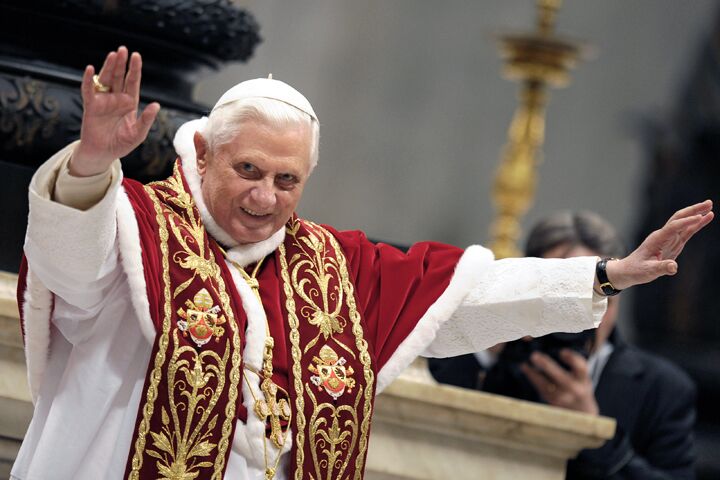
Pope Meets Kosovo Leader
Pope Benedict xvi received Kosovar President Fatmir Sejdiu in a private audience Saturday, revealing the Vatican’s continued interest in the future of the Balkans. The meeting came just before Serbia’s presidential election runoff round.
Afterward, the Vatican released a statement saying that the audience “does not represent any change in the position of the Holy See vis-a-vis the definitive juridical status of Kosovo.” Benedict has previously said that “he hoped any decision on Kosovo’s future would take account of the legitimate claims of all parties involved and would guarantee respect for everyone’s rights” (Associated Press, February 2).
As a political leader in his own right, the pope meeting with Kosovo’s leader lends a sense of legitimacy to the tiny province’s aims for independence.
Kosovo, a Serbian province, has said it will declare independence from Serbia soon, but Belgrade opposes the move, which would deprive it of one of its last territories, within its own sovereign borders. Serbia ruled the former nation of Yugoslavia until Slovenia, Croatia and Macedonia declared independence in 1991 and Bosnia and Herzegovina seceded in 1992. The two remaining republics, Serbia and Montenegro, formed the Federal Republic of Yugoslavia in 1992, which reformed into a more autonomous partnership in 2003 and disintegrated altogether in 2006.
The Vatican stated that should Kosovo declare its independence, the Vatican would follow events there “with particular attention” and consider the position of the international community, which, outside of Russia, is exactly what the Vatican wants it to be.
“The Holy See neglects no opportunity to exhort everyone to reconciliation, justice and peace,” the Vatican statement said.
That statement clashes with the Catholic administration’s past history in the Balkans. The Vatican has indeed followed developments in the area “with particular attention,” but peaceful “reconciliation” has not been the theme.
In fact, it was the Vatican, along with Germany, that destabilized the Balkans in the early ’90s. Prior to and during Slovenia and Croatia’s revolt against Belgrade, the United States, the United Nations, Europe, and most of the world supported a united Yugoslavia.
Germany recognized the secessionist republics anyway, and the Vatican ignored the international community and followed suit only days later. But the surprising victor of the world versus Germany and the Vatican was the latter.
“Prior to the Slovene unilateral action, the European Union and the United States were in agreement that the nation must remain united. This policy soon changed, and it became evident that Germany and Austria were pressing for the recognition of Slovene and Croatian independence. It is now known that as early as 1990 Croatian and Slovene leaders held meetings with senior politicians from both of these countries [Germany and Austria] urging support for independence. During this time the Vatican was openly lobbying for independence and had particular influence on German politicians in Bavaria” (“History of Western Interference in the Balkans,” page 7).
At the time, the New York Timesreported Germany’s “unusual assertiveness in moving ahead with a plan to extend diplomatic recognition to the breakaway Yugoslav republics of Croatia and Slovenia” as stirring “troubling historical associations.”
Those associations go back to World War ii when Nazi Germany came close to wresting control of the whole region. Germany absorbed Slovenia into the Third Reich and, alongside its puppet government in Croatia, fought the Serbs, who were friends of the Allies and resisted German domination of the region in World War i as well. Under Hitler’s Germany, Croatia enacted racial supremacy laws and built Nazi-style concentration and extermination camps to annihilate ethnic Serbs.
Another troubling historical association lies within the Vatican’s own disturbing ties with the Nazis throughout and even after the war.
Germany and the Vatican still recognize the importance of the region, and have managed to enlist the United States, Berlin’s enemy in both world wars, against the U.S.’s own ally. It was the U.S. and the rest of nato that bombed Belgrade into submission in 1999.
As the Trumpetreported in 2001, “How could one nation so pressure the rest of the world into recognizing two small breakaway states, thereby plunging Europe into a 10-year Balkan war? By using as a battering ram the support of the Vatican. This powerful illustration of German-Vatican cooperation trumping the rest of the world revealed where events in Europe were leading.”
For more crucial early-warning information on the Vatican and Germany’s aims in this region, read this important booklet: The Rising Beast—Germany’s Conquest of the Balkans.
